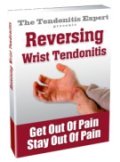Carpal Tunnel Surgery Statistics,
Mind Boggling Mistakes,
Uncertain Data,
Oh My!
A small collection of Carpal Tunnel Surgery Statistics:
You may be VERY interested in statistics on Carpal Tunnel Surgery if you have, or fear that you are about to get, a
Carpal Tunnel Diagnosis. If you have, it's highly likely that you have been warned that you may be looking at surgery in the near future. Or even if you're scheduled for surgery right now.
Here is a scattering of research and statistics to help you make your choice about whether to get wrist surgery or not.
Feb 1st or sooner!

More Edoscopic Surgeries Performed by Hand Specialty Trained Surgeons
Those with specialty training performed 4.5x more surgeries than surgeons without the specialty training.
But complication rates from carpal tunnel release are the same regardless of the training of the doctor.
The complication rates are the same on patients when the surgery was performed by Hand Fellowship trained surgeons as compared to surgeons without the specialty training.
See summarized details below.
Effects of Hand Fellowship Training on Rates of Endoscopic and Open Carpal Tunnel Release
Accepted 14 December 2015
Methods
We searched the American Board of Orthopaedic Surgery database for patients with carpal tunnel syndrome who underwent either open carpal tunnel release (OCTR) or endoscopic (ECTR) from 2003 to 2013. Cases with multiple treatment codes were excluded. Data were then divided into 2 cohorts: hand fellowship trained versus non–hand fellowship trained.
Results Hand fellowship–trained orthopedists performed about 4.5 times the number of ECTR than did non–hand fellowship–trained surgeons.
The northwest region of the United States had the highest incidence (23.1%) of ECTR, and the Southwest the lowest incidence (5.9%).
The complication incidence associated with CTR overall was 3.6%, without a significant difference between ECTR and OCTR.
There was no difference in overall complication rates with ECTR and OCTR between the 2 cohorts.
Wound complications were higher with OCTR (1.2% vs 0.25%) and nerve palsy with ECTR (0.66% vs 0.27%); with postoperative pain equivalent between techniques independent of fellowship training.
Conclusions Within the United States from 2003 to 2013, the rate of ECTR increased, as did complications. Hand fellowship–trained surgeons performed more ECTR than did non–hand fellowship–trained orthopedic surgeons, and both groups had similar complication rates.
Study found here: http://www.sciencedirect.com/science/article/pii/S0363502315016305
Carpal Tunnel Surgery Statistics
Cut On Through...
An investigation into 200 patients requiring a second carpal tunnel release surgery....
"In 108 cases, the flexor retinaculum was found to have been released incompletely. In 12 patients, a nerve laceration had occurred during the primary intervention. In 46 patients, symptoms were due to the nerve being tethered in scar tissue. The re-exploration revealed circumferential fibrosis around and within the median nerve in 17 patients and a tumour in the carpal tunnel in four patients. In 13 patients, no specific reason was found for recurrence of symptoms.
We conclude that CTR seems to be a widely underestimated procedure and revision surgery could be largely avoided by reducing technical errors during the primary operation."
[A. Gohritza, J. van Schoonhovena and U. Lanza - From the Hand Center, Bad Neustadt, Germany]
NOTE: This shows that technical error during Carpal Tunnel Release Surgery can cause complications with healing, scar tissue, and nerve laceration.
13 patients had a recurrence of Carpal Tunnel Symptoms for 'no specific reason', meaning that when they were cut into a second time, the doctors could find no reason for symptoms.
NOTE: If you do deal with a doctor, make sure they understand the Carpal Tunnel Syndrome Dynamic.
Carpal Tunnel Surgery Statistics
The Good
A follow-up study of 169 hands on 145 patients
"The numbness and paresthesias were relieved in eighty (98 per cent) of eighty-two hands in the open-release group compared with seventy-seven (99 per cent) of seventy-eight hands in the endoscopic-release group. This parameter was not recorded for three hands in the open-release group or six hands in the endoscopic-release group.
The satisfaction of the patients with the procedure, graded on a scale of 0 to 100 per cent, averaged 84 per cent in the open-release group compared with 89 per cent in the group that had had endoscopic release. We found no significant differences between the two groups with regard to the secondary quantitative-outcome measurements, including two-point discrimination, postoperative interstitial-pressure data for the carpal canal, Semmes-Weinstein monofilament testing, and motor strength.
The open technique resulted in more tenderness of the scar than did the endoscopic method. Thirty-two (39 per cent) of eighty-two hands in the open-release group and fifty (64 per cent) of seventy-eight hands in the endoscopic-release group were not tender at eighty-four days. This parameter was not recorded for three hands in the open-release group and six hands in the endoscopic-release group. The open method also resulted in a longer interval until the patient could return to work (median, twenty-eight days, compared with fourteen days for the open-release and endoscopic-release groups). Four complications occurred in the endoscopic carpal-tunnel release group: one partial transection of the superficial palmar arch, one digital-nerve contusion, one ulnar-nerve neuropraxia, and one wound hematoma"
(link no longer active): http://www.ejbjs.org/cgi/content/abstract/75/9/1265[Department of Orthopaedic Surgery, Massachusetts General Hospital, Boston 02114.]
NOTE: Those are pretty good numbers.
Carpal Tunnel Surgery Statistics
The Bad
Common post-surgery complications and recommendation to abandon the 'transverse inciscion' method.
"During a 12-year period, the authors treated 25 patients with 26 complications of previous carpal tunnel surgery. Twenty-four of these patients were referred following initial surgery elsewhere. The most frequent complication identified was neuroma of the palmar cutaneous branch of the median nerve in 14 of the cases. Other complications were hypertrophic scars, dysesthesias after multiple procedures to release the carpal tunnel, joint stiffness, failure to relieve symptoms, and neuromas of the dorsal sensory branch of the radial nerve.
All of these complications are potentially preventable. With a properly placed incision, exposure carried out under magnification, and surgery under direct vision the majority of these complications may be prevented. It is further noted that the technique of transverse incision at the wrist for release of the carpal tunnel is potentially dangerous and should be abandoned". (emphasis mine) Complications of carpal tunnel surgery by Journal of Neurosurgery, Dean S. Louis, M.D., Thomas L. Greene, M.D., and Raymond C. Noellert, M.D.
----
From a survey of Dutch doctors...
"The majority of neurosurgeons and orthopaedic surgeons seldom operate without electrodiagnostic confirmation in line with the Dutch consensus guideline on this subject. In contrast, plastic surgeons operate more often on patients with clinically defined carpal tunnel syndrome even with normal electrodiagnostic studies."
[Department of Neurology and Neurophysiology, Canisius-Wilhelmina Hospital, Nijmegen, The Netherlands.]
NOTE: So the plastic surgeons are operating on people with Carpal Tunnel Syndrome Symptoms that have normal nerve conduction, meaning, no compression of the nerve.?!?
Carpal Tunnel Surgery Statistics
The OK
A post-surgery survey...
"Forty-seven patients (51 hands) underwent carpal tunnel release and 32 patients completed the questionnaire. 88% had a significant reduction in the symptom severity score, while improvement in function status score was achieved in 79% of patients. Mean symptom severity score improved from 3.41 points preoperatively to 1.85 (p < 0.0001) points at the last follow up examination, while the mean function status score improved from 2.73 to 1.99 points (p < 0.0001). Outcome was poor in six patients with slight worsening of either symptom or function status score. Three patients were treated conservatively for minor wound infection without long-term sequelae."
[Department of Surgery, Level 2, Belfast City Hospital Lisburn Road, Belfast BT9 7AB.]
NOTE: Again, pretty good numbers.
Carpal Tunnel Surgery Statistics
So So Results
A study on 14 hands on 13 patients over 70...
Carpal tunnel release is unlikely to result in a total elimination of symptoms and complete restoration of function when performed in elderly patients with advanced disease. [Department of Orthopaedic Surgery, University of Rochester Medical Center, Rochester, NY, USA.]
NOTE: If I'm going to get cut on, I want it to FIX the problem.
Carpal Tunnel Surgery Statistics
Only 70% Ok, At Best
A review of 60 cases an average of 5.5 years after surgery.
87% reported a good or excellent overall outcome; the average time to maximum improvement of symptoms was 9.8 months.
However, 30% reported poor to fair strength and long-term scar discomfort, and 57% noted a return of some pre-operative symptoms, most commonly pain, beginning an average of 2 years after surgery. M. P. NANCOLLAS, C. A. PEIMER, D. R. WHEELER and F. S. SHERWIN]
NOTE: Not bad numbers, I guess...
Carpal Tunnel Surgery Statistics
The Ugly
A retrospective analysis of all reoperations between 1998 and 2006 is presented. There were 22 reinterventions done on 21 patients.
"RESULTS: ....three times pathologies were found in carpal tunnel, which could not be recognized or treated endoscopically: severe bleeding in the synovia, massive synovialitis and a swannoma of the median nerve. In seven patients transsected nerves had to be treated: one complete transsection of the median nerve, two nerves with injured radial fascicles, two nerves with violated ulnar fascicles, one neuroma of the median nerve and one transsection of both branches of the ulnar nerve." [Handchirurgie, St. Josefs-Krankenhaus Essen, Heidbergweg 22-24, 45257]
NOTE: Not only did theses 21 patients 'require' a second CTR surgery, but 7 of them had had their nerves partially or totally severed the first time. Oops.
Carpal Tunnel Surgery Statistics
57% Still Have Pain 5.5 Years Later
Title: Long-Term Results of Carpal Tunnel Release
"From the Department of Orthopaedic Surgery, School of Medicine and Biomedical Sciences, University at Buffalo, State University of New York, USA
To determine the long-term results of carpal tunnel release, we retrospectively reviewed 60 cases, an average of 5.5 years after surgery. 87% reported a good or excellent overall outcome; the average time to maximum improvement of symptoms was 9.8 months.
However, 30% reported poor to fair strength and long-term scar discomfort, and 57% noted a return of some pre-operative symptoms, most commonly pain, beginning an average of 2 years after surgery
Carpal tunnel syndrome was job related in 42%; of these, 26% changed from heavy to lighter work following surgery.
We found significant morbidity from the surgical scar and decreased strength, and often considerable delay until ultimate improvement, especially in patients with job-related carpal tunnel syndrome." [M. P. NANCOLLAS, C. A. PEIMER, D. R. WHEELER and F. S. SHERWIN]
TE: So technically the results look good, until you take into account that it took 9.8 months to heal, and even then they still had pain from scarring, decreased strength, less that perfect 'healing', and less ability to work the way they used to.
---------
If you find other good Carpal Tunnel Surgery Statistics, send them to me and I may add them to the page.
Return to the top of this Carpal Tunnel Surgery Statistics page.
Go to the Carpal Tunnel Syndrome Surgery page.
Go to the main Carpal Tunnel Syndrome page.
Go to the main Tendonitis page.
Go to the TendonitisExpert.com homepage.
| Share Your Story
|






